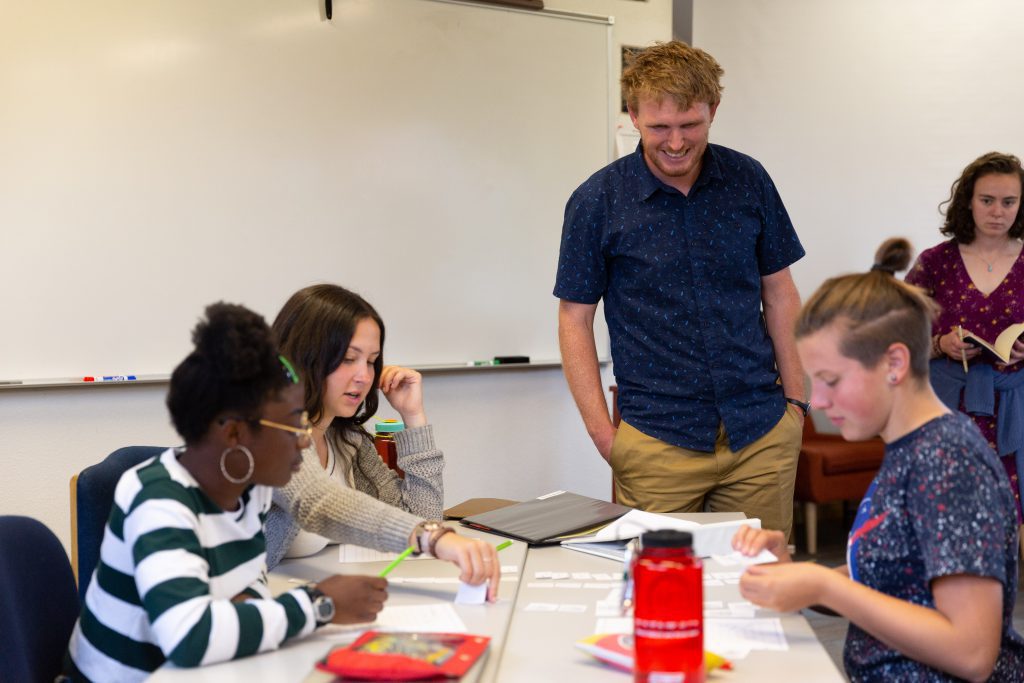Written by: Dylan Kane, HMI Math Faculty

What does an antiracist math class look like?
I’m not sure I know. But I’m working on it. For me, it starts with two questions. What is mathematics, and who does mathematics? Students often think of math as a bunch of men who look like Albert Einstein writing equations on a blackboard or figuring out the answer to some obscure problem that might not feel relevant to anyone else. But mathematicians do much more. Here’s one example I shared with my students this spring. Colombian mathematician Federico Ardila-Mantilla is a geometer who researches efficient ways to move objects through confined spaces. But in a 2019 article sharing a new and more efficient algorithm for robotic movement, Ardila-Mantilla connected his research to the Black Lives Matter movement. In recent years police departments have begun using lethal robots on people suspected of crimes. He worries, “What if it becomes trendy for mathematicians to start working on optimizing robots, but not to think about what is being optimized, or whom that optimization benefits?” Math is not only solving problems. Math is also deciding which problems are worth solving, and understanding the consequences of different solutions. In math class there is often one right answer. In the world, much less so. Ardila-Mantilla unpacks these tensions in his article, and I want to find more ways for my students to ask and answer those same questions.
HMI’s math and science teachers have worked over the last year to share the lives and work of mathematicians and scientists with students. We focus on representation beyond stereotypes. I share the work of Black mathematicians, female mathematicians, gender non-binary mathematicians, and more. Samuel Sinyangwe, a data scientist and activist who maps and works to end police violence. Gladys West, a “hidden figure” whose pioneering work formed the foundation of modern GPS systems. For me, these weekly presentations have become an opportunity to expand perceptions of what math is and who does math. I research someone new and discover how mathematicians think about the value of their work. In class we entertain questions like “Is math worth learning?” and “What is math good for?” And I’m not alone. Teachers around the country are wrestling with the same questions, working to center racial justice in their classrooms, and collecting resources to support each other. We have a great deal to learn by looking outward and listening to those who have been thinking about antiracism longer than we have.
A challenge of antiracist teaching is that antiracism is a journey, not a destination. It would be easy, but insufficient, to add a few things to our curriculum, check the antiracist box, and move on to the next thing. Things are always busy at HMI, and it can be a challenge to keep equity and inclusion at the center of our classrooms. This year, I am committing to use weekly mathematician presentations to anchor a broader curriculum transformation. A few mathematician presentations alone are far from enough. But those presentations are something, and each week I want to take those moments to reflect on where I’ve been, where I’m going, and what more I can do.
Ardila-Mantilla asks in his article, “What does it mean to do math ethically?” I want to continue to ask myself what it means to teach math ethically. I have a lot to learn. I want to use these weekly reminders to ask questions of myself. Which perspectives am I reading? In which directions am I expanding my horizons? How can I go from teaching about the work of mathematicians working to dismantle racism, to teaching my students that mathematics? How can math class help students to better understand police violence and institutionalized racism? How can math class give students a sense of agency in working toward a better future?